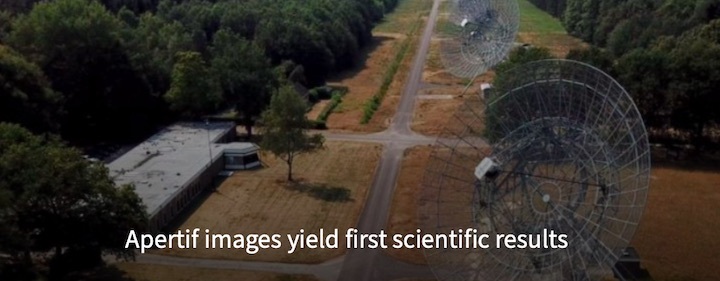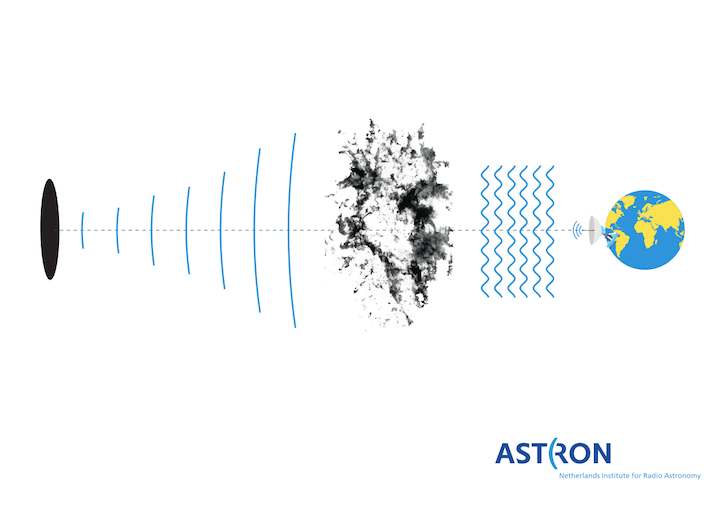24.08.2020

The Apertif upgrade of the Westerbork Synthesis Radio Telescope (WSRT) has yielded its first scientific paper based on its images. The paper has been published in the scientific journal Astronomy & Astrophysics.
Using Apertif (APERture Tile In Focus), searching at a radio frequency of 1.4 GHz, researchers have found an intra-hour variable (IHV) source, described in the paper Extreme intra-hour variability of the radio source J1402+5347 discovered with Apertif. IHVs are very compact radio sources that twinkle on timescales of minutes and are among the rarest objects in the sky. For the past 30 to 40 years only a handful of IHVs have been discovered. However, with Apertif, researchers were able to discover ten more IHVs apart from the one described in the paper. All these IHVs were discovered in a single year, proving Apertif to be very suitable for discovering rare sources. Researchers believe these IHVs to be quasars: supermassive black holes. These quasars are located about 10 billion lightyears from Earth.
Plasma clouds
The twinkling of these quasars, however, is caused by something else entirely: nearby turbulent plasma clouds situated between the IHV and Apertif, but totally unrelated to the quasar. Through their observations with Apertif, the scientists have learned that these plasma clouds are not uniformly spread across the Galaxy, but are clustered, and that one of these plasma clouds is located very near to, perhaps even within our own Solar System. “We think it lies more or less within the Oort Cloud,” says Prof. Dr. Tom Oosterloo, senior scientist at ASTRON and first author of the paper. If this is indeed the case, that would be a find of great scientific significance. It could point to a new component in our Solar System, possibly tied to its origin.

Among the newly discovered IHVs there are three which are located close to one another. Oosterloo: “That is very curious. This of course isn’t a coincidence, but we don’t know its meaning yet.”
With Apertif being able to locate plasma clouds, these clouds can be studied in more detail. “Combining these findings with observations from the Karl G. Jansky Very Large Array radio telescope in New Mexico (USA), we can learn more about the properties of these plasma clouds,” Oosterloo says. “Apertif was built for a reason and these results show that it works as intended.” Thanks to the WRST upgrade, astronomers can search for more of such quasars and learn more about the Solar System in its early days.
Quelle: ASTRON

